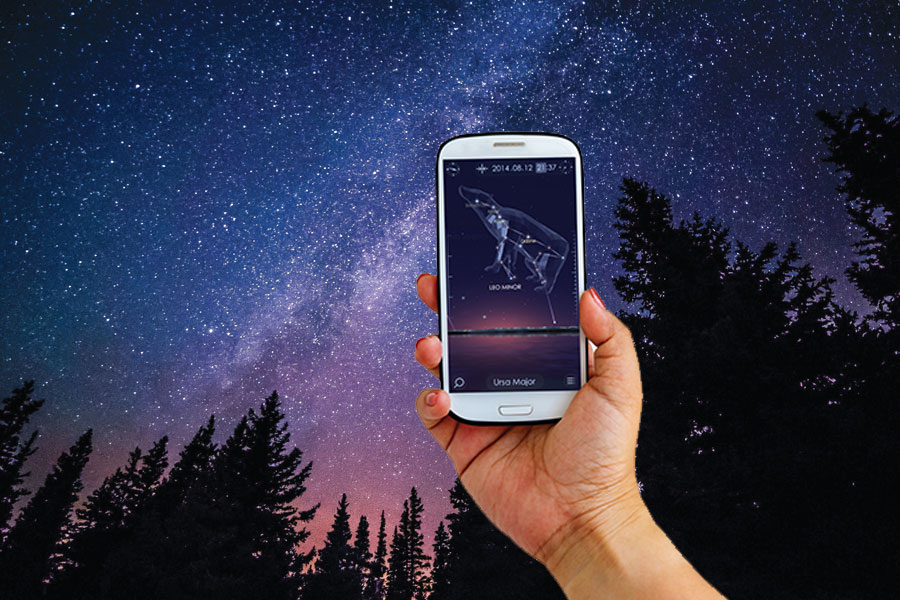A New Way to View the Night Sky

Humans have been observing the night sky for centuries, from scientists discovering new planets to children eagerly awaiting to wish upon the first star they see.
Thanks to technology and decades of star charting, anyone with a smart device can download an app to help them view the stars. Astronomy apps combine the wonders of stargazing with an interactive learning experience without an expensive, high-powered telescope.
Stargazing Mobile Apps
There are a variety of astronomy apps available for iOS and Android users, ranging from free to upwards of $39.99 or more. Star Walk 2 (available in the App store and in Google Play) offers in-depth views of planets and constellations and allows you to travel in time to see what the sky looked like on a different day. If you prefer to test out an app first, SkyView offers a lite version so you can try it out before making any monetary commitments.
How It Works
Astronomy apps communicate with smart devices through a combination of GPS, Wi-Fi and your device’s built-in compass to detect your location, date and time. Once the app knows where you are it can accurately display the night sky, even if your view is blocked. For a unique experience, apps such as SkyView and Star Walk use augmented reality (AR) technology, taking stargazing to a whole new level. AR is an interactive experience that utilizes the environment around you, integrating real-world objects into the app. If you are feeling creative, there’s an opportunity to take a selfie with Saturn.
If you are concerned about using up all your data, you have options! Many apps connect through Wi-Fi or download the data onto your device during the initial installation, so make sure you’re connected to Wi-Fi before you begin. If you plan on purchasing an app, check out the reviews and see if there’s a free or lite version first.
Whether you’re studying astronomy or just want to stargaze from the comfort of your living room, an astronomy app is a great way to view and learn more about the stars.
Stargazing in Minnesota
Stargazing is difficult in the middle of a metropolis. Escape the city lights for a night of stargazing and exploring the universe. Grab your significant other, a group of friends or some family members and check out one of these events around the state.
Universe in the Parks
During the summer, University of Minnesota’s Institute for Astrophysics partners with local and state parks to host public telescope viewing events, which are currently TBD. Attend the public talk, then observe the stars through multiple 8-inch reflecting telescopes. Staff also provides free star maps and encourages the audience to ask a lot of questions. Check back soon for updates on the 2021 Schedule of Universe in the Parks Events.
Bell Museum Planetarium
If you haven’t visited the new and improved Bell Museum yet, add it to your summer bucket list. At the Whitney and Elizabeth MacMillian Planetarium, visitors can tour the cosmos. From the comfort of your seat, you will fly through Earth’s atmosphere and experience the universe up close. Showtimes take place Friday through Sunday and advanced reservations are recommended.
Camping with the Stars
For a 45-minute road trip west, try Eagle Lake Observatory in Baylor Regional Park, just outside Norwood Young America. As the main public outreach facility for the Minnesota Astronomical Society, Eagle Lake Observatory consists of two observatory facilities (with more than a dozen telescopes and refractors) and a classroom to conduct presentations. For a weekend of stargazing, try attending MAS’ 13th Annual Camping with the Stars event Aug. 13-15, 2021. Visitors can even bring their own telescopes, or simply enjoy the tours, talks, solar viewing and more offered throughout the day and night.
Dark Finder
It can be hard to find a really dark place. For your own adventure, try picking a spot on the Dark Site Finder. This map allows you to see and track light pollution by colors, so you can be sure you’re finding the darker areas of the state.
This article was originally published in the LIVE PLAY AAA July/August 2019 issue. It was recently updated in June 2021.





